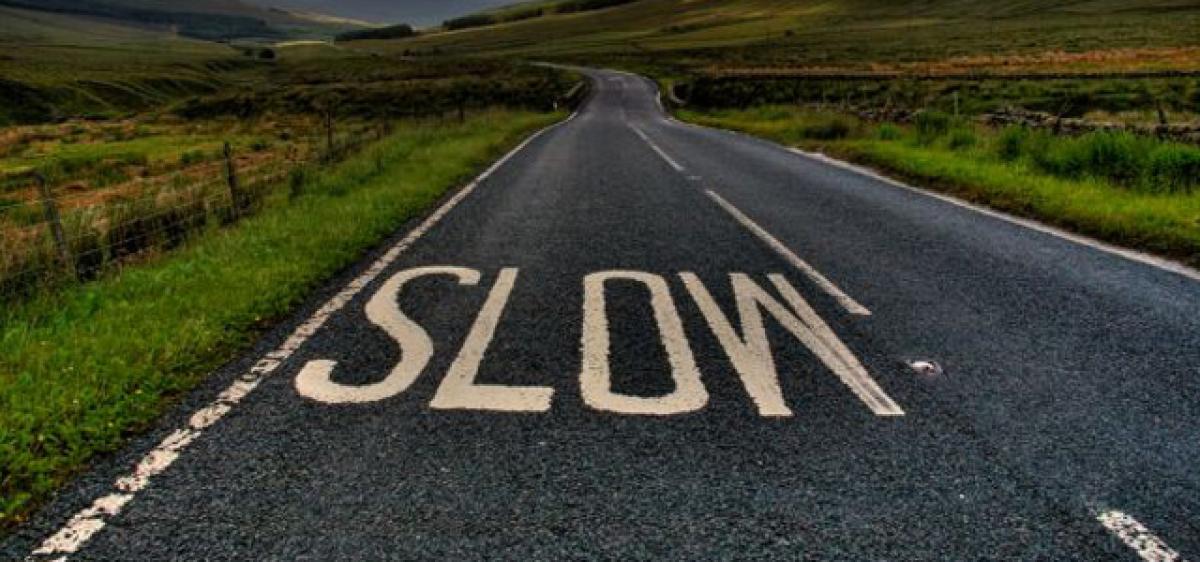Live
- A Guide to Temperature and Humidity Standards in Data Center Server Rooms
- Gadwal collector briefs on details of voters
- Jupally Krishna Rao takes part in Alampur rallu
- Bharath Prasad files 3rd Nomination
- Baisakh Month: A Time of Auspicious Beginnings and Sacred Festivals
- Oust BJD govt for overall development, says Shah
- Unveiling the Hidden Gems: Surprising Health Benefits of Garlic Peels
- Overcoming Sleep Struggles: A Comprehensive Guide to a Restful Night
- RTC bus hit the auto
- MLA Kuchukula Rajesh Reddy participated in the Birappa festival
Just In

It is time that we took that sign we face at every turn on the highways of India more seriously speed thrills, but also kills. Managing speed,a new report by the World Health Organization (WHO), released to coincide with the United Nations Road Safety Week from May 8 to 14, suggests that excessive or inappropriate speed contributes to one in every three road traffic fatalities worldwide.
It is time that we took that sign we face at every turn on the highways of India more seriously speed thrills, but also kills. Managing speed,a new report by the World Health Organization (WHO), released to coincide with the United Nations Road Safety Week from May 8 to 14, suggests that excessive or inappropriate speed contributes to one in every three road traffic fatalities worldwide.
While supporting the call by the WHO to “slow down, save lives”, the George Institute made a fervent plea to the global community to take measures to address speed outlined by the global health body seriously. Measures to address speed, points out WHO,prevent road traffic deaths and injuries, andmake populations healthier and cities more sustainable.
Around 1.25 million people die every year on the world’s roads. Studies indicate that typically 40-50 per cent of drivers go over posted speed limits. Drivers who are male, young and under the influence of alcohol are more likely to be involved in speed-related crashes. Road traffic crashes remain the number one cause of death among young people aged 15–29 years. They are estimated to cost countries from 3-5 per cent of GDP and push many families into poverty.
According to data available with the WHO, only 47 countries of the world follow good practice on one of the main speed management measures, namely implementing an urban speed limit of 50 km/h or less and allowing local authorities to reduce these limits further on roads around schools, residences and businesses.
The situation in India is no different, According to police data from 2015, 43.7 per cent of the total road crashes were due to over- speeding which caused 60,969 deaths and 2,12,815 persons injured. “The UNRSW theme this year is speed and the numbers above tell us exactly why the focus needs to be #slowdown.
Between 50 km/hr to 80 km/hr the chances of death in case of a crash are increased from 20 to 60%. Doing the maths over 40 000 lives could have been saved in India in 2015 by just slowing down,” says Dr. JagnoorJagnoor, Head of the Injury Division at the George Institute India
According to her, “There are 4E’s to road safety education, engineering, enforcement and emergency medical services. So the approaches to managing speed include modifying roads that calm traffic such as round-about, speed bumps; establishing and enforcing speed limits, raising awareness about the dangers of speeding and assisting with in-vehicle technology to manage speed.”
The George Institute for Global Health India conducted a study of 2200 people in three hospitals in North India with one of its collaborators Dr Shankar Prinja, from PGI, Chandigarh highlighting the health, social and economic burden of road injuries. It was revealed that 10% of people die post- discharge and that more than a third of the family’s experienced financial distress due to injuries.
It is the young economically productive age group that is highest at risk, 15-29 year olds and it is estimated that the total cost of road injuries is 3% of India’s GDP, which is more than our entire health budget. “Speed is at the core of the global road traffic injury problem,” saysWHO Director-General Dr. Margaret Chan. “If countries were to address just this key risk, they would soon reap the rewards of safer roads, both in terms of lives saved and increases in walking and cycling, with profound and lasting effects on health.”

© 2024 Hyderabad Media House Limited/The Hans India. All rights reserved. Powered by hocalwire.com







